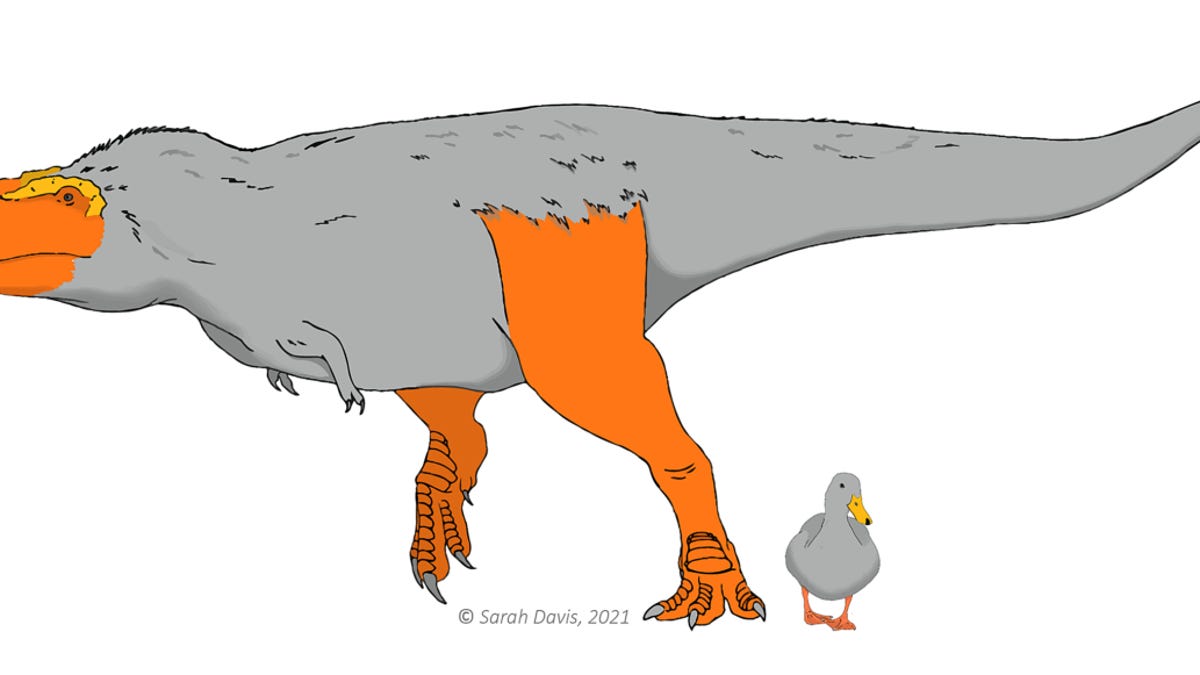Dinosaurs may have rocked brightly colored feet and faces, scientists say
Some dinosaurs might have had eye-catching body parts.
When we look at birds, from bright red cardinals to yellow goldfinches, we tend to focus on their plumage. But a lot of birds have colorful body parts that aren't feathers, so a team of scientists wondered if birds' distant dinosaur ancestors might also have had some flashy bits.
According to a study published this week in the journal Evolution, some dinosaurs might have had colorful feet and faces, and those splashy body fashions could have been used to attract mates.
"Living birds use an array of pigments and can be very colorful on their beaks, legs and around their eyes," lead author Sarah Davis said in a University of Texas at Austin statement on Thursday. "We could expect that extinct dinosaurs expressed the same colors."
The researchers looked at what's known about extinct dinosaurs, modern birds and a common ancestor, an archosaur that lived during the Triassic. "By analyzing whether bright body color was present in living dinosaur relatives -- including turtles, crocodiles and over 4,000 bird species -- the researchers determined that the common ancestor had a 50% chance of having bright colors in the soft tissues of its body," the university said.
The data analysis also revealed insights into modern birds. Carotenoids -- pigments that give birds their bright yellow, orange and red colors -- are found in plants and invertebrates. Carrots are a famous example of how carotenoids make food orange. The study found birds with plant-based diets with plenty of carotenoids tend to have more bright colors in more places on their bodies than meat-focused birds.
"The earliest dinosaurs were pony-sized and ate large, vertebrate prey," said study co-author Julia Clarke, a paleontologist at the University of Texas. "Different groups shifted to plant-dominated or mixed diets. This shift likely led to changes in coloration of skin and non-feather tissues."
The fossil record doesn't give scientists a lot to go on when it comes to determining dino colors, but the study suggests some bright new possibilities for what dinosaurs might have looked like. We'll have to wait for the next installment of the Jurassic Park series to see if this idea catches on in popular culture.


